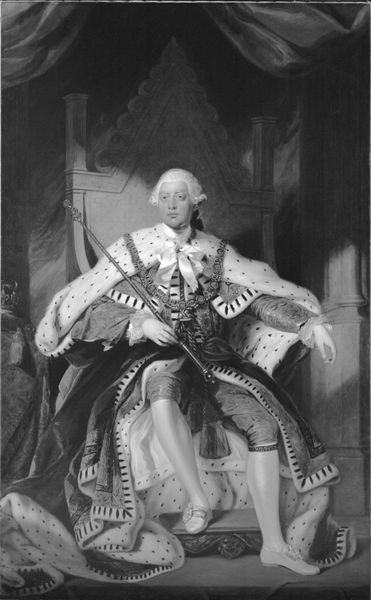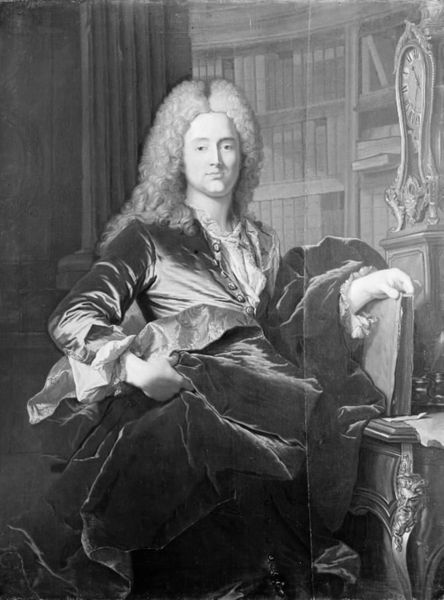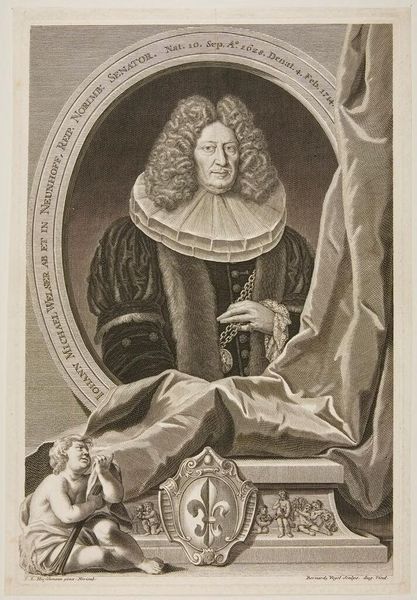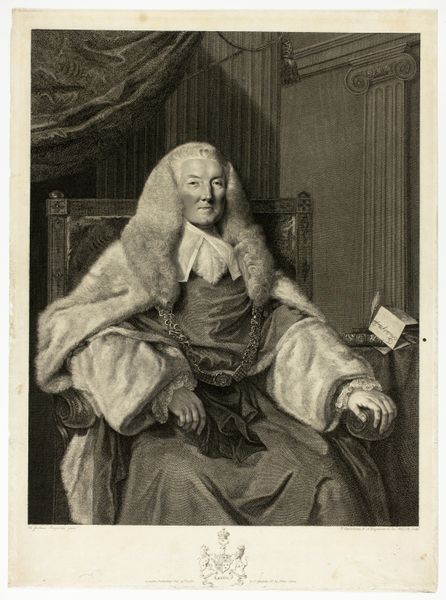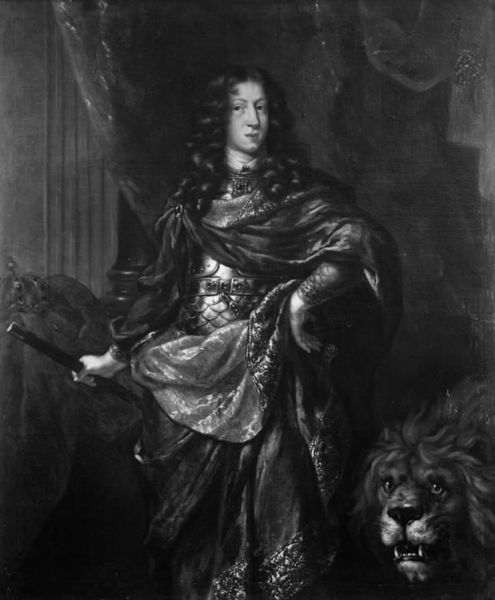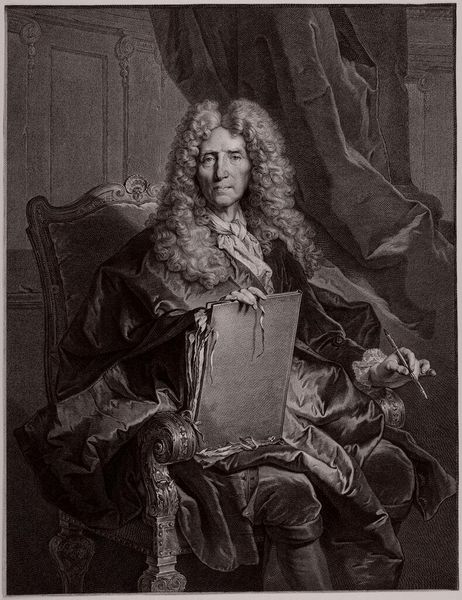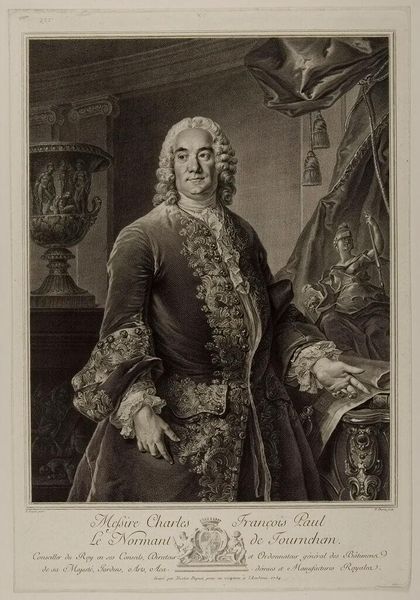
painting, oil-paint
#
portrait
#
baroque
#
painting
#
oil-paint
#
academic-art
#
monochrome
#
monochrome
Dimensions: 13 cm (height) x 10 cm (width) (Netto)
Curator: Let's turn our attention to this intriguing painting from between 1699 and 1732. It portrays Generalprokurør Caspar Bartholin, captured in oil paint by Nicolai Christian Moritz. Editor: Immediately, I’m struck by the restrained elegance despite the elaborate Baroque style. The monochrome palette really emphasizes the textures of the fabric and the sitter's attire. Curator: Absolutely. Contextually, Bartholin was a prominent figure in Danish legal history. As General Prosecutor, he wielded considerable power, reflecting a societal structure steeped in patriarchal authority. How might that power be represented here? Editor: The drape in the background frames him almost like a stage, conferring a certain performative status. And while seemingly relaxed, the firm grip on the cane could suggest controlled authority rather than leisurely rest. There's a conscious decision in the composition itself to communicate gravitas. Curator: Indeed. Consider too, the artist, Moritz, and the patronage system of the time. These portraits served not only as representations but also as social currency, solidifying Bartholin’s position within the aristocracy. It reinforces the unequal power dynamics inherent in Baroque society. The choice of formal academic style adds to that sense of order and control. Editor: I see that. There’s a controlled symmetry at play, subtly mirroring his social standing in the arrangement of shapes and tonal values, almost turning him into an archetype more than an individual. The eye is led by the crisp white collar to the almost theatrically coiffed hair. Curator: Which would have signified wealth, knowledge, and influence in that period, right? It all converges into an undeniable declaration of status. A declaration visually echoed by the monochromatic presentation, highlighting not individuality but power stripped of anything other than presence. Editor: I find the monochrome more intriguing now. While a result of its time or perhaps even just this photo, the restriction is an assertion. Even the colour adds nothing, his position and authority, the texture of fabric – they are more than enough to make this work and him, known. Curator: Precisely. Examining this image then gives us space to critically question who is depicted and what kind of power the subject wields through visual languages. Editor: And considering its artful construction forces me to reassess the meaning behind the image of an authority figure—an engagement made richer by its complex structural composition.
Comments
No comments
Be the first to comment and join the conversation on the ultimate creative platform.



